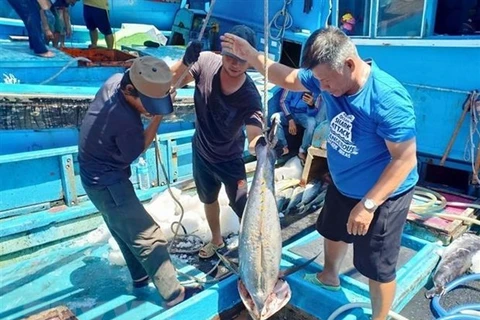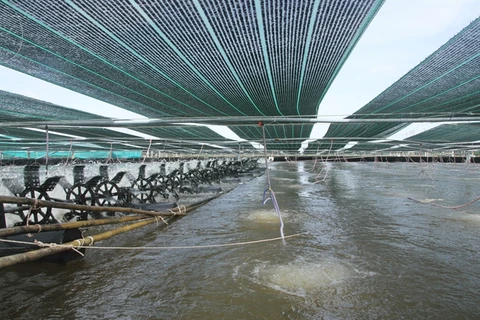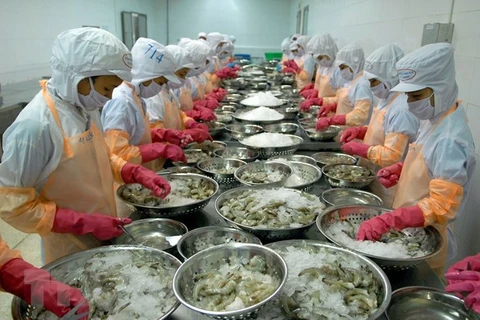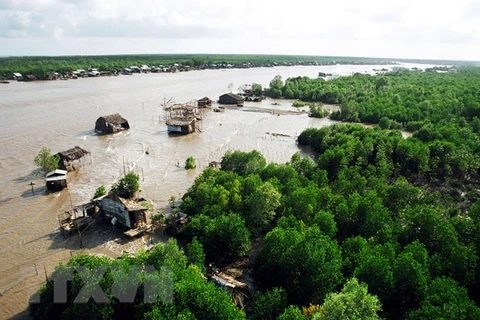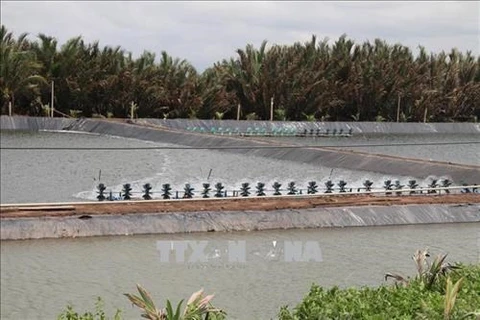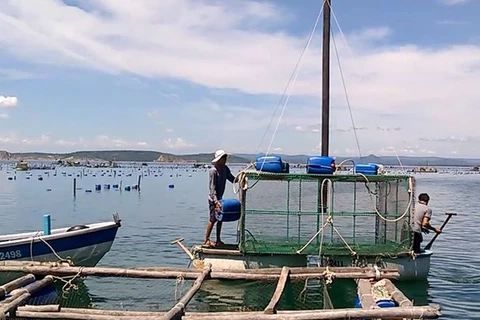Ca Mau (VNA) - The southernmost province of Ca Mau is applying itself to developing intensive and super-intensive shrimp farming along with alternative shrimp - rice culture and integrated shrimp - forest cultivation models under international standards.
Le Thanh Trieu, Director of the provincial Department of Agriculture and Rural Development, said shrimp farming will be modernised by promoting scientific application to improve productivity, quality, effectiveness, and food safety while also protecting the environment.
More investment will be poured into intensive farming to help the province maintain its leading position in Vietnam in shrimp farming, he noted.
From now to 2025, the local shrimp farming area will stay at about 280,000 ha, generating an annual output of 700,000 tonnes, up 3.5 percent each year on average.
Five super-intensive shrimp farming zones will be formed, with 1,000 ha gaining international certification. Meanwhile, about 10,000 ha of intensive and semi-intensive farming will be developed in areas with favourable conditions, including 500 ha that meet international standards, according to Trieu.
Resources are also being invested in the alternative shrimp - rice culture model, which suits local soil conditions and can help improve shrimp output, he said, noting that the province is looking to have about 40,000 ha of this type of farming by 2025, including 10,000 ha of certified organic farming.
Resources are also being invested in the alternative shrimp - rice culture model, which suits local soil conditions and can help improve shrimp output, he said, noting that the province is looking to have about 40,000 ha of this type of farming by 2025, including 10,000 ha of certified organic farming.
The official added that the integrated shrimp - forest cultivation model, which is suitable for areas with mangrove forests, will also be expanded. Shrimp, together with crab, blood cockle, and fish, will be farmed organically in these mangrove forests, helping to improve the local shrimp industry’s value and competitiveness in both domestic and foreign markets.
Ca Mau is currently home to 19,000 ha of shrimp culture models meeting international standards such as GlobalGAP, Naturland, Best Aquaculture Practices, and Selva Shrimp. About 4,200 farming households are taking part in these farming models, with certified shrimp output topping 10,000 tonnes each year.
The province’s fishery output grew some 4.1 percent annually between 2014 and 2020. It was estimated at 600,000 tonnes last year, including 210,000 tonnes of shrimp, up 4.7 percent year-on-year./.
Ca Mau is currently home to 19,000 ha of shrimp culture models meeting international standards such as GlobalGAP, Naturland, Best Aquaculture Practices, and Selva Shrimp. About 4,200 farming households are taking part in these farming models, with certified shrimp output topping 10,000 tonnes each year.
The province’s fishery output grew some 4.1 percent annually between 2014 and 2020. It was estimated at 600,000 tonnes last year, including 210,000 tonnes of shrimp, up 4.7 percent year-on-year./.
VNA

